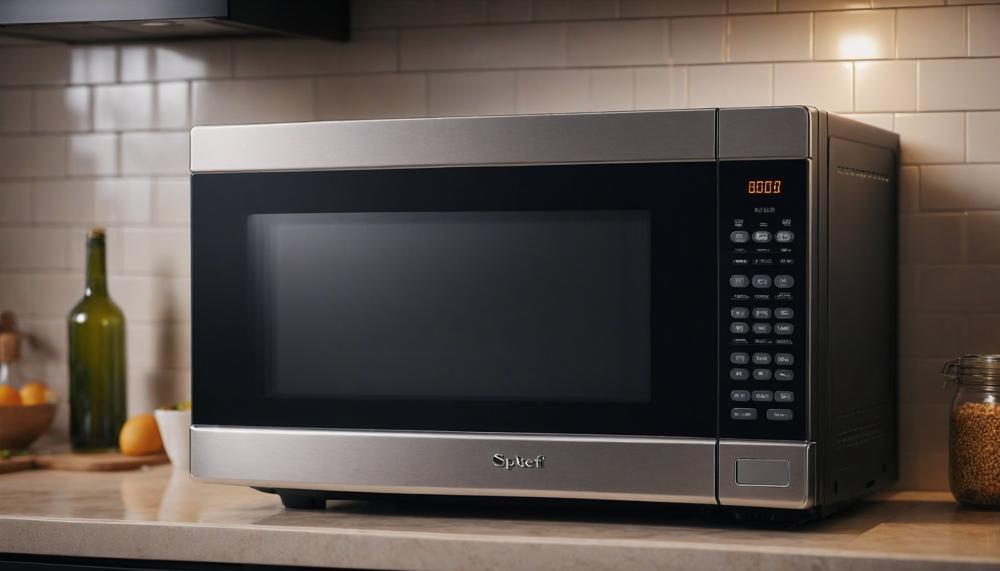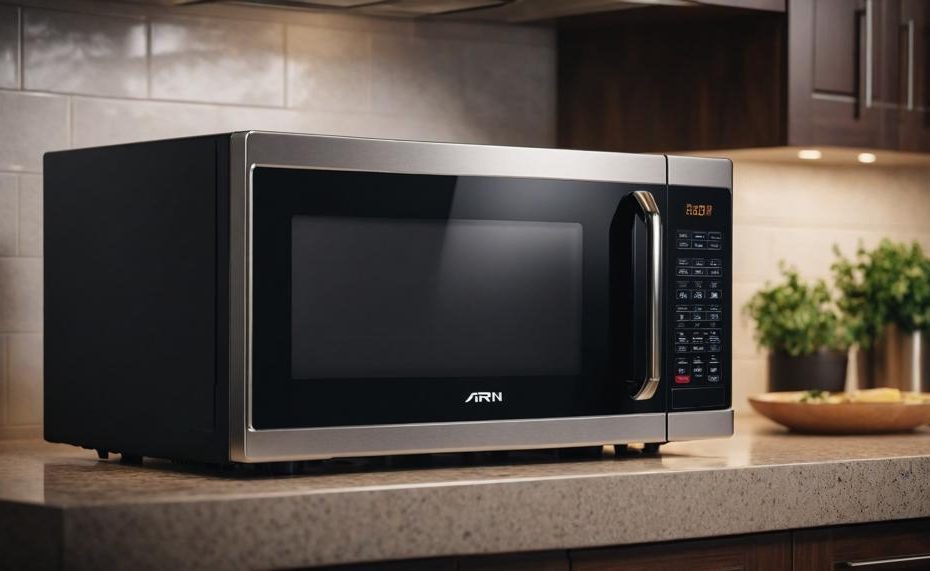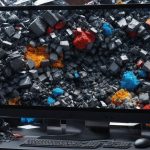Thinking of getting rid of that old microwave cluttering your kitchen counter? Properly disposing of a microwave oven is more than just a matter of clearing space—it’s about making a responsible choice for the environment.
Tossing it in the trash can lead to harmful electronic waste piling up in landfills, but there are several smart and eco-friendly ways to say goodbye to your outdated appliance.
Here’s what you need to know:
- Check Local Regulations: Different areas have specific rules for disposing of electronic waste. Make sure to follow your local guidelines.
- Donate or Sell: If your microwave is still in working condition, consider donating it to a charity or selling it. This way, someone else can benefit from it.
- E-Waste Recycling Centers: These centers are equipped to recycle and repurpose materials from old microwaves, ensuring they don’t harm the environment.
- Manufacturer Take-Back Programs: Some brands offer programs to take back old appliances for proper recycling.
- Retailer and Utility Programs: Certain stores and utility companies provide appliance collection services for proper disposal.
By taking these steps, you not only clear out your old microwave but also contribute to reducing electronic waste. Ready to make a difference? Let’s dive into the best ways to dispose of your microwave oven properly.
Contents
What are Microwaves Made Of?
Microwave ovens are comprised of several key materials, each contributing uniquely to their function. Here’s a breakdown of these components and their roles:
| Component | Material | Function |
| Magnetron | Metals (Copper, Aluminium) | Generates microwaves by converting electrical energy into microwave radiation. |
| Waveguide | Metal (Aluminium, Steel) | Channels the microwaves from the magnetron into the oven cavity. |
| Oven Cavity | Metal (Stainless Steel, Aluminium) | Reflects microwaves, ensuring they cook food evenly by bouncing within the cavity. |
| Turntable | Glass or Ceramic | Rotates food to provide uniform cooking and heating. |
| Control Panel | Plastic, Silicone, Electronic Components | Allows users to set cooking times, power levels, and other functions. |
| Door and Seal | Glass, Plastic, Rubber | Provides a transparent view of the food while preventing microwaves from escaping the cavity. |
Key Materials and Their Roles
- Magnetron: The heart of the microwave, the magnetron, is made of copper and aluminium. It generates the microwaves that cook the food. Without this component, the appliance would be unable to heat food.
- Waveguide: This component, typically made from aluminium or steel, directs the microwaves from the magnetron to the oven cavity. It ensures that the microwaves are efficiently transmitted without loss.
- Oven Cavity: Constructed from metals like stainless steel or aluminium, the cavity reflects microwaves, causing them to bounce and heat food evenly. The metal walls prevent microwaves from escaping, ensuring safety and efficiency.
- Turntable: Made of glass or ceramic, the turntable rotates food, helping to achieve uniform cooking. This prevents hot spots and ensures all parts of the food are heated.
- Control Panel: Comprising plastic, silicone, and various electronic components, the control panel allows users to interact with the microwave. It lets you set cooking times, choose power levels, and select different functions, making the appliance user-friendly.
- Door and Seal: The door, usually made of glass and plastic with a rubber seal, ensures safety by keeping microwaves inside the cavity. The transparent door allows users to monitor cooking progress.
How To Dispose Of A Microwave Safely?
Check Local Regulations

Before disposing of a microwave, check with your local waste management authority for specific regulations.
Some areas have stringent rules for electronic waste (e-waste) disposal to protect the environment.
Unplug and Clean the Microwave
Ensure the microwave is unplugged and thoroughly cleaned. Remove any food debris or spills to make the disposal process smoother.
Explore Recycling Options
Many communities offer e-waste recycling programs. Contact local recycling centers or electronics retailers to see if they accept microwaves. This helps keep hazardous materials out of landfills.
Consider Professional Disposal
For larger or commercial-grade microwaves, hiring a professional waste management company might be necessary. They ensure safe and environmentally friendly disposal.
Remove Hazardous Components
If regulations permit, you can dismantle the microwave yourself, removing hazardous components like capacitors and magnetrons.
However, this should only be done if you’re knowledgeable about electronic components.
Donate or Sell
If the microwave is still functional, consider donating it to a charity or selling it. Many organisations can make good use of working appliances.
Avoid Landfills
Do not dispose of microwaves in regular trash or landfills. They contain hazardous materials that can harm the environment. Always follow proper e-waste disposal methods.
Materials Recycled from Microwaves
Microwaves contain several components that can be recycled:
| Component | Material | Recycling Details |
| Capacitors | Various metals | Must be removed carefully; contains hazardous materials. |
| Magnetron | Ceramics and metals | Can be recycled but contains beryllium oxide, which is hazardous. |
| Electronic Circuitry | Copper, gold, and other metals | Valuable metals can be recovered and reused. |
| Plastic Components | Plastic | Can be recycled into new plastic products. |
| Glass Plate | Glass | Recyclable if undamaged. |
Can you throw away the microwave?
The short answer is no, you cannot just throw away your microwave in the regular rubbish. Microwaves contain electronic components and potentially hazardous materials that should be disposed of properly to prevent environmental harm and comply with local regulations.
Here’s a guide on how to properly dispose of your old microwave:
How do I properly dispose of my old microwave?
There are several responsible ways to get rid of your old microwave:
| Method | Description | Link/Action |
| Local Recycling Centre | Many recycling centres accept electronic waste, including microwaves. They have the means to safely dismantle and recycle the components. | Find a recycling centre near you |
| Sell Online | If the microwave is still functional, consider selling it on platforms like eBay or Facebook Marketplace. | Sell on eBay |
| Donate | Give it to someone in need or donate it to a charity or local community centre. Ensure the microwave is in working condition. | Find a charity shop |
| Bulky Waste Collection | Contact your local council to arrange a bulky waste collection service. This is often a convenient way to dispose of large items. | Arrange collection |
| Professional Waste Removal | Hire a professional waste removal company that specialises in electronic waste. They ensure safe and eco-friendly disposal. | Clearabee |
| Put on the Curb | In some areas, you can place the microwave on the curb for special collection days dedicated to electronic waste. | Check local rules |
| Rent a Dumpster | For large clear-outs, renting a dumpster might be an option. Ensure the company accepts electronic waste. | Budget Dumpster |
By choosing one of these methods, you help protect the environment and comply with waste disposal regulations. Always ensure the microwave is unplugged and cleaned before disposal.
Is It Safe to Take Apart a Microwave?
Taking apart a microwave is generally not safe for most people. Microwaves contain components that can pose serious health risks if mishandled. High-voltage capacitors can store dangerous levels of electricity even when unplugged, potentially leading to severe electric shocks. Additionally, exposure to microwave radiation, though unlikely, is a concern if the device is not properly handled.
Knowing the proper way to dispose of a microwave is crucial for several reasons:
- Environmental Protection: Microwaves contain hazardous materials such as heavy metals and electronic components that can harm the environment if not disposed of correctly.
- Compliance with Local Regulations: Many places have specific laws and guidelines for disposing of electronic waste. Improper disposal can result in fines or legal repercussions.
- Safety: Ensuring the microwave is disposed of properly reduces the risk of injury to yourself and others. Attempting to dismantle it without proper knowledge can be dangerous.
How to Dispose of a Microwave Safely
- Check Local Regulations: Before taking any action, consult your local laws and regulations regarding electronic waste disposal.
- Recycling: Many areas offer recycling programs specifically for electronic waste. Contact your local recycling center to see if they accept microwaves.
- Donation: If the microwave is still functional, consider donating it to a charity or thrift store.
- Professional Disposal Services: Some companies specialize in electronic waste disposal. Hiring professionals ensures that your microwave is disposed of safely and legally.
Table of Safe Disposal Methods
| Method | Description | Benefits |
| Local Recycling Programs | Drop off the microwave at a designated electronic waste recycling center. | Environmentally friendly, legally compliant. |
| Donation | Give the microwave to a charity or thrift store if it’s still operational. | Helps those in need, reduces waste. |
| Professional Disposal Services | Hire a company that specializes in the disposal of electronic waste. | Convenient, ensures proper handling. |
| Special Collection Days | Place the microwave on the curb for special electronic waste pick-up days. | Easy, often free of charge. |
For more detailed information on microwave disposal and local recycling options, visit EPA Electronics Donation and Recycling.
Why Should Microwaves Be Disposed Of Safely?
Properly disposing of a microwave oven is crucial due to its potential environmental and health hazards. Here’s why it matters and what risks can arise if it’s not done safely:
| Reason | Description | Potential Risks |
| Environmental Contamination | Microwaves contain materials like glass, plastic, and heavy metals that can leach into the soil and groundwater if not properly disposed of. | Leaching of harmful substances can contaminate water sources and soil, impacting wildlife and human health. |
| Hazardous Waste | Components such as lead, mercury, and cadmium are present in microwaves and are classified as hazardous waste. | Improper disposal can lead to toxic exposure, causing severe health issues such as neurological damage and kidney failure. |
| Recyclable Materials | Microwaves contain valuable metals and parts that can be recycled and reused, reducing the need for new raw materials. | Failure to recycle these materials increases the demand for mining and manufacturing, contributing to environmental degradation. |
| Legal Regulations | Many local laws require electronic waste to be disposed of in specific ways to ensure safety and environmental protection. | Ignoring these regulations can result in legal penalties and fines. |
| Safety Hazards | Even when a microwave is no longer functional, it can still carry an electric charge and residual heat. | Improper handling can lead to electric shock or burns, posing a direct risk to individuals. |
| Community Health | Proper disposal prevents harmful exposure to hazardous materials, protecting community health. | Incorrect disposal can increase the risk of exposure to toxic substances for sanitation workers and the community. |
Conclusion
In conclusion, properly disposing of a microwave oven is not just about clearing space in your kitchen.
It’s also about making a responsible choice for the environment. Simply tossing it in the trash can lead to harmful electronic waste piling up in landfills.
Instead, consider checking local regulations, donating or selling it, using e-waste recycling centers or manufacturer take-back programs, and taking advantage of retailer and utility programs to ensure proper disposal. By doing so, you not only clear out your old microwave but also contribute to reducing electronic waste and protecting the environment.
Therefore, it is crucial to follow proper disposal methods to avoid harming the environment and comply with local regulations.





